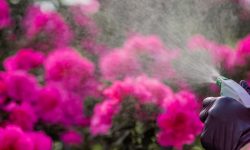Mock orange, also known as Philadelphus, is a beloved shrub prized for its fragrant white blooms and vigorous growth. Its flowers not only beautify gardens but also release a sweet, delicate scent that attracts pollinators and creates a relaxing atmosphere. However, to ensure abundant and healthy blooms, proper pruning at the right time is essential. Many gardeners are unsure when to prune, which can result in uneven growth and fewer flowers.
Pruning at the correct season helps mock orange conserve energy, promote strong branches, and produce flowers evenly. This article provides detailed guidance on when and how to prune mock orange, along with simple yet effective care tips. You will learn the ideal timing, pruning techniques, and year-round maintenance strategies to enjoy fragrant, long-lasting blooms and keep your shrub vibrant throughout the season.
Understanding Mock Orange Growth Cycle

Mock orange, also called Philadelphus, is a deciduous shrub admired for its fragrant white flowers. To prune effectively, understanding its growth cycle is essential. These shrubs bloom on old wood, which means most flowers develop on branches that grew the previous year. Knowing this helps gardeners avoid cutting branches that will produce blooms in the upcoming season. Failing to understand the growth cycle can result in fewer flowers and wasted effort.
During spring, mock orange focuses on vegetative growth. New shoots emerge quickly, expanding the shrub’s size and structure. Flower buds begin forming in late summer, after the plant has fully grown. Pruning too early can remove these developing buds, reducing bloom quantity. Gardeners must observe when buds are forming to preserve them for the next season. Correct timing ensures both strong growth and abundant flowering.
As the season shifts to late summer and early fall, the plant starts preparing for winter. Energy moves from shoot growth to strengthening roots and older branches. This phase indicates when pruning should be avoided, as cutting at this time may harm the plant’s energy reserves. By aligning pruning with the natural growth cycle, gardeners encourage strong branches, more blooms, and long-term shrub health. Understanding this cycle lays the foundation for consistent, fragrant, and beautiful mock orange flowers year after year.
Best Time of Year to Prune Mock Orange
The best time to prune mock orange is immediately after flowering. These shrubs typically bloom in late spring to early summer. Pruning at this time prevents removal of flower buds for the next season. Gardeners who cut too early risk reducing bloom quantity significantly. Timing is crucial for both aesthetic and plant health reasons.
Pruning after flowering allows the shrub to recover quickly. The plant still has active growth, so it can heal wounds and produce new shoots efficiently. This period ensures that energy is directed toward developing branches that will support next year’s blooms. By contrast, pruning in late fall or winter can stress the shrub and limit flower production. Observing the flowering schedule and waiting until blooms fade helps maintain a balanced and vigorous plant structure.
For regions with mild climates, light pruning can be done in early spring. Remove any dead or damaged wood to encourage healthy growth. Avoid heavy pruning before flowering, as this can eliminate many buds and delay blooms. In colder regions, gardeners should also consider frost dates. Waiting until after the last frost and after flowers fade ensures pruning does not interfere with the plant’s natural cycle. Following this timing strategy promotes long-term health, consistent blooms, and a well-shaped mock orange shrub.
Essential Pruning Techniques for Mock Orange
Pruning mock orange requires careful technique to ensure healthy growth and abundant flowers. Using sharp, clean tools is essential. Dull or dirty pruners can damage stems and spread disease. Always sterilize tools before use to prevent infections. Cutting at a slight angle encourages water runoff and faster healing. Proper technique minimizes stress and supports vigorous new growth.
Begin by removing dead, damaged, or diseased branches first. These branches weaken the shrub and reduce flower production. Next, thin out overcrowded stems to improve airflow and light penetration. This reduces the risk of fungal disease and encourages stronger blooms. Focus on shaping the shrub naturally rather than forcing a strict form. Mock orange responds well to gradual shaping, allowing the plant to maintain its natural beauty while supporting healthy flowers.
For more advanced pruning, consider selectively shortening older stems. Cutting back some older branches stimulates new shoots, which produce the most vigorous flowers. Avoid removing more than one-third of the shrub in a single session. Over-pruning can stress the plant and reduce flowering. By combining careful thinning, deadwood removal, and selective shortening, gardeners can maintain a balanced structure. Applying these techniques consistently ensures long-term health, robust growth, and plentiful, fragrant blooms that enhance any garden year after year.
Tools and Materials Needed for Pruning
Proper tools make pruning mock orange safer and more effective. Essential tools include sharp hand pruners, loppers, pruning saws, and gloves. Sharp pruners ensure clean cuts, which reduce damage to stems and minimize infection risk. Loppers handle thicker branches that hand pruners cannot manage, while a pruning saw is necessary for very old or woody stems. Gloves protect hands from scratches, thorns, and sap irritation. Maintaining tools in good condition prevents unnecessary stress on the plant and supports healthy regrowth.
Sterilizing tools before and during pruning is crucial. Rubbing alcohol, a diluted bleach solution, or a commercial disinfectant keeps blades clean. This practice prevents the spread of fungal or bacterial diseases from plant to plant. Clean blades produce smoother cuts that heal faster, reducing the risk of branch dieback. Regular maintenance of pruners and saws, such as sharpening blades, tightening bolts, and oiling moving parts, ensures tools remain reliable and efficient for every pruning session.
Besides tools, supportive materials are essential for post-pruning recovery. Mulch helps retain soil moisture, regulate temperature, and suppress weeds. Light fertilization provides nutrients that encourage new growth and flower bud development. Watering adequately after pruning ensures the plant has enough hydration to recover quickly. Using the right combination of tools, sterilization practices, and post-pruning care materials maximizes plant health. These steps help gardeners maintain vigorous mock orange shrubs with abundant, fragrant blooms year after year, ensuring both beauty and long-term growth.
Common Mistakes to Avoid When Pruning
Pruning at the Wrong Time
One of the most common mistakes is pruning mock orange at the wrong time. These shrubs bloom on old wood, meaning most flowers develop on branches that grew the previous year. Cutting too early can remove developing flower buds, drastically reducing bloom quantity. Many gardeners prune before the flowers fade, unaware that new buds are forming beneath the current blooms. Pruning too late, such as in late summer or fall, can stress the plant and limit energy reserves needed for next year’s growth. Incorrect timing often leads to sparse flowering and slower recovery.
Pruning immediately after flowering is the ideal approach. This timing preserves buds for the next season while allowing the shrub to recover and produce new shoots efficiently. Observing the plant’s growth and flowering cycle helps determine the best moment for pruning. In addition, watching for regional climate factors, such as frost dates and seasonal temperature shifts, ensures that pruning does not interfere with natural growth. By respecting the shrub’s natural rhythm, gardeners maximize blooms, maintain healthy structure, and enjoy fragrant flowers year after year. Proper timing is the foundation of successful mock orange care.
Over-Pruning
Over-pruning is another frequent error that weakens mock orange shrubs. Removing more than one-third of the plant in a single session stresses the shrub, reducing photosynthesis and limiting energy available for flower production. Excessive cutting can also expose inner branches to sunlight, causing leaf burn or branch dieback. Gradual pruning, focused on dead or damaged stems, is safer. Over-pruning often leads to irregular shapes and slower overall growth, making the plant look unbalanced.
Gardeners should focus on thinning overcrowded stems to improve airflow without excessive removal. Dead, diseased, or damaged branches should always be removed first to maintain shrub health. Selective pruning encourages strong new shoots that support abundant flowers the following season. By maintaining a balance between trimming and preservation, gardeners promote long-term plant vigor, robust structure, and consistent blooms. Controlled pruning enhances both aesthetics and flower production, ensuring mock orange shrubs remain visually appealing and healthy year after year.
Neglecting Tool Maintenance and Post-Pruning Care
Many gardeners neglect tool maintenance and post-pruning care, which can reduce plant health. Using dull or dirty pruners, loppers, and saws can crush stems or spread disease. Fungal and bacterial infections can move between plants if tools are not sterilized properly. Smooth, clean cuts heal faster, prevent dieback, and minimize stress on the shrub. Regular sharpening and lubrication of pruning tools improve efficiency and safety during pruning sessions.
Post-pruning care is equally critical. Watering immediately after pruning replenishes lost moisture and supports new shoot growth. Applying a balanced, light fertilizer stimulates bud formation and strengthens branches. Mulching helps regulate soil temperature, retain moisture, and reduce weed competition. Skipping these steps can delay flowering and weaken the shrub. By combining proper tools, sterilization, and supportive care, gardeners ensure mock orange shrubs remain vigorous, abundant, and fragrant. Long-term health and robust blooms depend on consistent, careful attention to both pruning technique and aftercare.
Aftercare and Maintenance Following Pruning
After pruning mock orange, proper care ensures strong recovery and abundant blooms. Watering immediately is essential. This replenishes lost moisture and supports new shoot growth. Without adequate hydration, the shrub may struggle, and flowering can be reduced. Water deeply but avoid waterlogging, as excessive moisture can harm roots. Maintaining consistent soil moisture encourages healthy root development and long-term plant strength.
Mulching is another critical post-pruning practice. Applying a layer of organic mulch around the base of the shrub helps retain soil moisture. It also regulates temperature and reduces weed growth, which competes for nutrients. Mulch acts as a protective barrier during seasonal temperature fluctuations, ensuring the roots remain stable. Light fertilization supports the plant’s recovery. A balanced fertilizer rich in nitrogen, phosphorus, and potassium stimulates new growth, encourages strong branches, and promotes flower bud formation for the next season.
Regular monitoring of the shrub after pruning is important. Inspect branches for signs of disease or stress. Remove any damaged or diseased wood promptly to prevent spread. Additionally, continue routine care such as watering during dry periods, maintaining mulch, and ensuring the shrub receives sufficient sunlight. By combining careful pruning with attentive aftercare, gardeners can maximize flowering potential. Consistent maintenance promotes vigorous growth, a healthy structure, and long-lasting, fragrant blooms that enhance the garden year after year.
Encouraging More Blooms Through Selective Pruning
Selective pruning is key to maximizing flower production in mock orange shrubs. Removing specific branches encourages stronger growth. Focus on older, less productive stems to redirect energy toward new shoots. These new shoots will develop more vigorous flower buds for the next season. Avoid cutting all branches equally; selective pruning ensures a balance between structure and flowering potential.
Identifying which branches to prune involves observing the shrub’s growth patterns. Look for crowded areas where branches overlap and block sunlight. Cutting these selectively improves airflow, reduces disease risk, and allows remaining branches to receive adequate light. Also, remove branches that are weak, damaged, or crossing each other. This strategy strengthens the shrub’s framework and creates a more open, aesthetically pleasing shape.
Timing and moderation are essential. Perform selective pruning right after flowering to preserve existing buds while encouraging new growth. Avoid over-pruning, which can stress the shrub and reduce blooms. By combining careful observation, selective removal, and proper timing, gardeners can significantly increase flower output. This approach not only enhances the shrub’s beauty but also promotes long-term health. Consistently applied, selective pruning ensures vibrant, abundant, and fragrant mock orange flowers every year.
Seasonal Pruning Tips for Different Climates
Pruning mock orange varies depending on regional climate and seasonal conditions. In colder climates, late spring or early summer is ideal. Pruning too early may expose buds to frost damage, which can reduce flowering for the next season. Gardeners should observe local frost dates carefully and wait until the risk has passed. This ensures new shoots and flower buds remain healthy and protected. Timing is critical to maintain plant vigor and maximize blooms.
In warmer climates, pruning can occur slightly earlier after blooms fade. The shrub recovers faster in mild conditions, allowing for additional shaping and selective thinning if needed. However, avoid pruning during extreme heat periods, which can stress the plant. Freshly cut branches exposed to intense sun may suffer sunburn or dehydration. Performing pruning during cooler morning or evening hours helps reduce plant stress and encourages rapid recovery. Observing local weather patterns is essential for timing pruning appropriately.
Regardless of climate, annual maintenance is essential. Removing dead, damaged, or diseased wood improves overall health and prevents disease. Thinning overcrowded branches enhances light penetration and airflow, supporting stronger flower production. Mulching and adequate watering further aid recovery and help maintain soil moisture and temperature. Gardeners should monitor the shrub’s response to pruning and adjust techniques as needed. Tailoring pruning practices to seasonal and regional conditions ensures vigorous growth, abundant flowering, and long-term health. Proper timing and care guarantee that mock orange shrubs consistently produce fragrant, beautiful blooms year after year.
Shaping Mock Orange for Aesthetic Appeal
Shaping mock orange during pruning enhances both beauty and plant health. Maintaining a natural form encourages balanced growth. Avoid forcing unnatural shapes, as this can stress the shrub and reduce blooms. Gradually trimming branches helps the shrub retain its natural elegance while promoting strong stems and flowers. A well-shaped shrub improves airflow and light penetration, supporting overall vigor and flowering potential.
Focus on creating a rounded or slightly open shape. Remove branches that cross, crowd, or grow inward toward the center of the shrub. This reduces the risk of disease and ensures even light distribution. Selective shortening of older, woody stems stimulates new shoot development, which produces the most vigorous flower buds. Shaping is most effective immediately after flowering, allowing the shrub to recover and prepare for next season’s blooms.
Shaping should also consider long-term growth patterns. Avoid removing too much at once, as this can weaken the plant. Regular, moderate shaping combined with selective pruning ensures a visually appealing shrub that blooms abundantly. Over time, consistent shaping encourages stronger branches, better structure, and a fuller appearance. By prioritizing natural form and proper timing, gardeners can enjoy mock orange shrubs that are both beautiful and productive, providing fragrant, long-lasting blooms throughout the garden season.
Fertilization and Soil Care for Pruned Mock Orange
Fertilization After Pruning
Proper fertilization is essential for mock orange after pruning. Pruning removes leaf area, temporarily reducing the plant’s energy. Providing nutrients helps support new growth and encourages flower bud formation. Use a balanced fertilizer containing nitrogen, phosphorus, and potassium. Nitrogen promotes healthy foliage, phosphorus stimulates flower development, and potassium strengthens stems and overall plant structure. Fertilizing at the right time helps the shrub recover faster and prepares it for abundant blooms next season.
It is best to apply fertilizer soon after pruning. Spread it evenly around the base of the shrub, avoiding direct contact with stems. Water thoroughly after application to help nutrients reach the roots. Over-fertilization should be avoided, as it can damage the plant and reduce flowering. Regular, moderate fertilization supports consistent growth, stronger branches, and a fuller, healthier shrub. By combining pruning with proper fertilization, gardeners ensure robust growth and long-lasting, fragrant blooms year after year.
Soil Care and Watering
Soil condition and watering significantly affect recovery after pruning. Well-draining soil prevents waterlogging and root rot. Adding organic matter improves soil texture, nutrient retention, and root health. Mulching around the base of the shrub maintains soil moisture, regulates temperature, and suppresses weeds. Mulch also releases nutrients slowly, contributing to strong growth. Monitoring soil pH is important, as mock orange thrives in slightly acidic to neutral conditions.
Watering complements soil care. Deep, consistent watering encourages strong root development, while shallow watering can produce weak roots. After pruning, monitor growth and adjust watering based on weather and soil moisture. Maintaining proper soil conditions and hydration ensures the plant recovers fully. Together with fertilization, soil care and watering promote vigorous growth, abundant flowers, and a healthy, long-lasting shrub. These practices guarantee vibrant, fragrant blooms every season.
Pest and Disease Management for Pruned Mock Orange
Common Pests Affecting Mock Orange
Pruned mock orange shrubs are more susceptible to pests during recovery. Aphids, spider mites, and scale insects are the most common threats. These pests feed on sap, weakening branches and reducing flower production. Early detection is critical to prevent infestations from spreading throughout the shrub. Gardeners should inspect leaves, stems, and buds regularly for signs of damage, such as discoloration, sticky residue, or holes.
Using natural predators is an effective strategy for pest control. Ladybugs, lacewings, and predatory mites feed on harmful insects without damaging the shrub. In addition, insecticidal soaps or horticultural oils can be applied if infestations are severe. Always follow instructions carefully to protect beneficial insects and avoid plant damage. Maintaining clean garden conditions, such as removing fallen leaves and pruning debris, reduces pest habitats and helps prevent future infestations. By combining monitoring, biological control, and careful treatment, gardeners can protect pruned mock orange shrubs and maintain vigorous growth.
Disease Prevention and Management
Fungal and bacterial diseases can also threaten pruned mock orange shrubs. Using sharp, sterilized tools during pruning reduces the risk of infection. Overcrowded branches create poor airflow, which encourages fungal growth. Thinning branches after pruning improves ventilation and sunlight penetration, reducing disease susceptibility. Proper pruning and sanitation are key preventive measures.
Watering practices influence disease development. Watering at the base rather than overhead keeps foliage dry and prevents leaf fungal infections. Promptly removing any diseased or damaged branches prevents spread to healthy parts of the shrub. Monitoring the plant regularly allows early detection and treatment. Applying targeted fungicides only when necessary minimizes chemical use while protecting blooms. Combining proper pruning, watering, sanitation, and timely treatment ensures pruned mock orange shrubs remain healthy, vigorous, and capable of producing abundant, fragrant flowers season after season.
Encouraging Re-Bloom in Mock Orange Shrubs
Encouraging re-bloom in mock orange shrubs requires careful pruning and consistent care. Most mock orange varieties bloom once per season on old wood. However, selective pruning and proper maintenance can sometimes stimulate a secondary, smaller bloom. Focusing on removing dead, damaged, or weak branches immediately after the main flowering encourages energy to be redirected to healthier shoots, which can produce additional flowers.
Fertilization and soil care play a key role in re-blooming. Using a balanced fertilizer shortly after pruning supports new growth and strengthens buds for potential secondary flowers. Mulching retains moisture and helps regulate soil temperature, providing optimal conditions for healthy development. Regular monitoring ensures that the plant receives enough water, nutrients, and light to sustain additional blooming efforts. Stressing the plant with over-pruning or improper care can prevent re-bloom, so moderation and attention to detail are crucial.
Timing also affects re-bloom potential. Light pruning of non-flowering shoots or spent blooms later in the season may encourage a secondary bloom in mild climates. Avoid heavy pruning, as it can remove energy reserves and reduce overall flowering. By combining careful pruning, proper fertilization, consistent watering, and climate awareness, gardeners can maximize bloom potential. These strategies help maintain vibrant, fragrant flowers throughout the season and ensure that mock orange shrubs remain healthy and attractive year after year.
Mulching and Ground Care for Mock Orange
Mulching around mock orange shrubs is essential for soil health and plant vigor. A 2–3 inch layer of organic mulch, such as shredded bark or compost, helps retain soil moisture. This reduces water stress, especially during hot summer months. Mulch also regulates soil temperature, protecting roots from extreme heat and cold. Maintaining a consistent mulch layer prevents weeds from competing with the shrub for nutrients and water, supporting strong growth and abundant flowering.
Ground care includes monitoring soil conditions regularly. Well-draining soil prevents waterlogging and root rot, which can harm the plant. Adding organic matter improves soil texture, encourages microbial activity, and enhances nutrient availability. Periodically loosening compacted soil around the base ensures oxygen reaches the roots. Adequate soil care promotes stronger root development and a more resilient shrub, capable of supporting large, fragrant blooms.
Mulching and ground maintenance also help the shrub recover after pruning. Moisture retention and soil nutrition support new shoot growth and flower bud formation. Avoid piling mulch against the trunk, which can cause stem rot. Instead, keep a small gap around the base to allow airflow. Combining mulch, proper soil care, and consistent monitoring ensures long-term health and vibrancy. With attentive mulching and ground care, gardeners can enjoy thriving mock orange shrubs that produce fragrant, long-lasting flowers year after year.
Companion Plants for Mock Orange
Choosing the right companion plants enhances the beauty and health of mock orange shrubs. Planting perennials, ornamental grasses, or low-growing flowering plants around mock orange adds visual interest. Companion plants can also provide natural protection against pests by attracting beneficial insects. Selecting species with similar soil, water, and sunlight requirements ensures all plants thrive together.
Companion plants can improve soil conditions and microclimate. Legumes, for example, fix nitrogen in the soil, providing natural fertilization. Groundcovers reduce soil erosion and maintain consistent moisture levels around the shrub. Taller ornamental grasses provide wind protection and visual contrast, highlighting the mock orange blooms. Choosing a mix of textures and bloom times enhances garden aesthetics throughout the season.
Strategically placing companion plants also encourages pollinators. Bees, butterflies, and other beneficial insects are attracted to a diverse garden, improving mock orange pollination and overall flower production. Companion planting reduces the need for chemical treatments and promotes a healthier, more resilient garden. By thoughtfully selecting companion plants, gardeners can create a balanced ecosystem that supports vigorous growth, abundant blooms, and a visually stunning garden featuring fragrant, long-lasting mock orange flowers year after year.
Seasonal Monitoring and Adjustments
Regular monitoring is essential to keep mock orange shrubs healthy and flowering abundantly. Check the plant weekly for signs of stress, pests, or disease. Observing leaf color, stem growth, and flower development helps detect problems early. Prompt action prevents minor issues from becoming serious. Seasonal adjustments to care practices enhance plant health and bloom quality.
Adjust watering based on weather and seasonal conditions. In dry summer months, deep watering ensures roots receive sufficient moisture. Reduce watering in cooler or rainy seasons to prevent waterlogging. Fertilization schedules should also be modified according to the growth cycle. Light fertilization after flowering supports bud formation, while heavier feeding in early spring stimulates vegetative growth. Adjusting soil care, such as adding mulch or organic matter, maintains ideal moisture and nutrient levels throughout the year.
Seasonal pruning and shaping should align with the shrub’s natural cycles. Remove dead or diseased wood after flowering and thin overcrowded branches to improve airflow. Observe growth patterns to make minor adjustments to pruning techniques. Seasonal monitoring allows gardeners to tailor care practices, ensuring mock orange shrubs thrive. With attentive observation and timely adjustments, the shrub remains vigorous, produces abundant fragrant flowers, and enhances the garden landscape year after year. Regular monitoring is key to long-term success.
FAQ About Pruning Mock Orange
What is the best time to prune mock orange?
The best time to prune mock orange is immediately after flowering. This preserves next year’s flower buds, ensures healthy growth, and minimizes stress. Pruning too early or too late can remove developing buds or reduce energy for the plant, leading to fewer blooms in the following season.
How much should I prune at one time?
Avoid removing more than one-third of the shrub at a time. Over-pruning stresses the plant, reduces photosynthesis, and weakens branches. Focus on dead, damaged, or overcrowded stems first. Gradual pruning helps maintain natural shape, promotes vigorous new shoots, and encourages abundant, fragrant blooms.
What tools are necessary for pruning mock orange?
Essential tools include sharp hand pruners, loppers for thicker branches, a pruning saw for woody stems, and gloves for protection. Sterilizing tools before and during pruning prevents disease spread. Proper tool maintenance ensures clean cuts, faster healing, and healthy plant recovery after pruning.
How do I encourage more blooms?
Selective pruning of older or weak branches encourages new growth that produces more flowers. Fertilizing after pruning, maintaining proper soil moisture, and mulching supports healthy shoot development. Timing pruning right after flowering maximizes energy for new buds, promoting vibrant, fragrant blooms for the next season.
How do I prevent pests and diseases after pruning?
Monitor the shrub regularly for aphids, spider mites, and scale insects. Use natural predators, insecticidal soaps, or horticultural oils if needed. Maintain clean pruning tools, thin overcrowded branches, and water at the base to prevent fungal infections. Prompt attention keeps the shrub healthy and ensures abundant flowers.
Conclusion
Pruning mock orange at the right time ensures abundant, fragrant blooms and long-term shrub health. Combining proper tools, selective pruning, fertilization, and mulching supports vigorous growth and strong branches. Seasonal monitoring and pest management prevent stress and disease, while companion planting enhances the garden ecosystem. By observing growth patterns and adjusting care practices, gardeners can maintain natural shape, encourage re-bloom, and enjoy vibrant flowers year after year. Attentive care and consistent maintenance guarantee that mock orange shrubs remain a stunning, fragrant focal point, providing beauty and enjoyment throughout every season.






